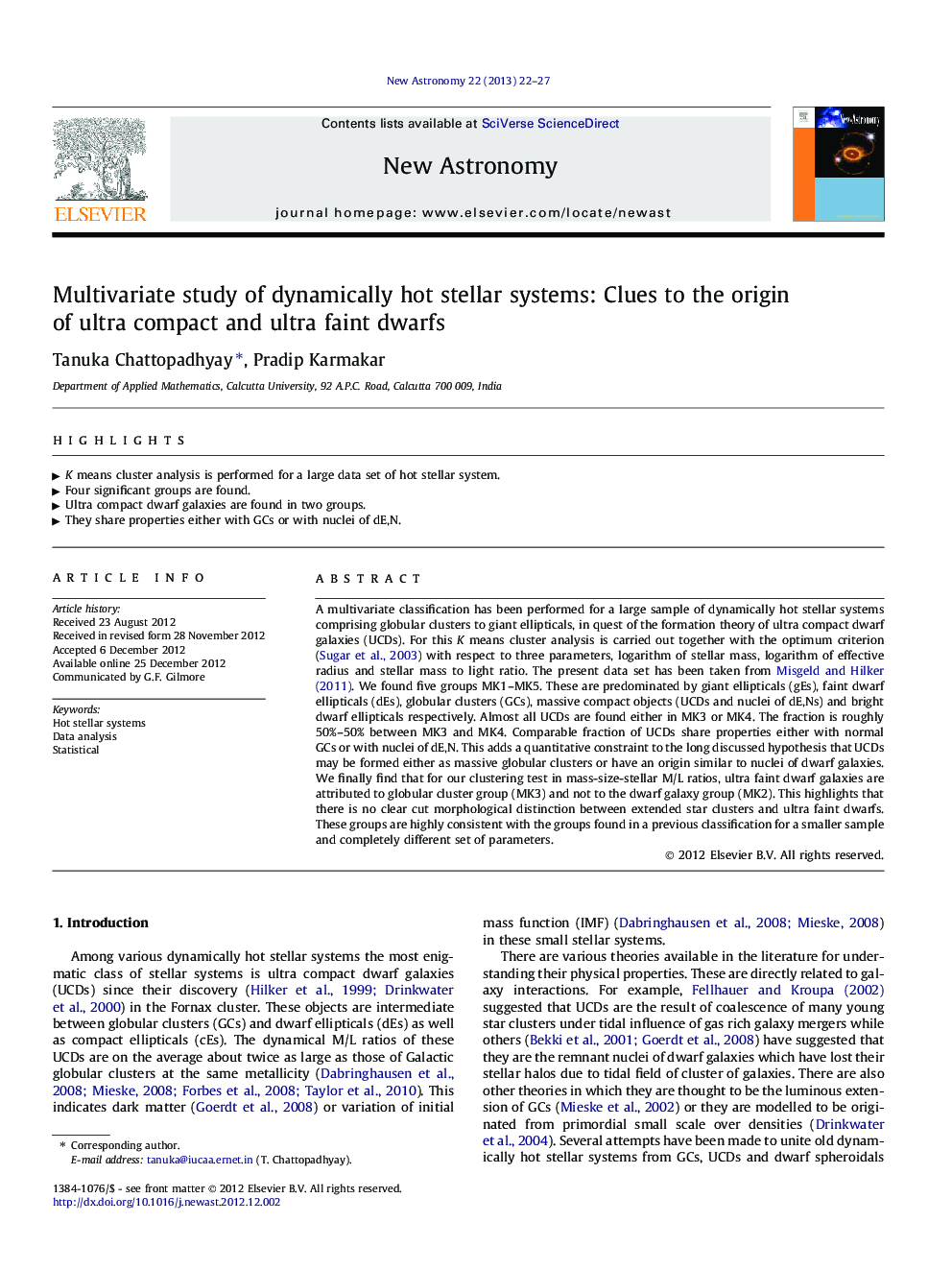| Article ID | Journal | Published Year | Pages | File Type |
|---|---|---|---|---|
| 1779062 | New Astronomy | 2013 | 6 Pages |
A multivariate classification has been performed for a large sample of dynamically hot stellar systems comprising globular clusters to giant ellipticals, in quest of the formation theory of ultra compact dwarf galaxies (UCDs). For this K means cluster analysis is carried out together with the optimum criterion ( Sugar et al., 2003) with respect to three parameters, logarithm of stellar mass, logarithm of effective radius and stellar mass to light ratio. The present data set has been taken from Misgeld and Hilker (2011). We found five groups MK1–MK5. These are predominated by giant ellipticals (gEs), faint dwarf ellipticals (dEs), globular clusters (GCs), massive compact objects (UCDs and nuclei of dE,Ns) and bright dwarf ellipticals respectively. Almost all UCDs are found either in MK3 or MK4. The fraction is roughly 50%–50% between MK3 and MK4. Comparable fraction of UCDs share properties either with normal GCs or with nuclei of dE,N. This adds a quantitative constraint to the long discussed hypothesis that UCDs may be formed either as massive globular clusters or have an origin similar to nuclei of dwarf galaxies. We finally find that for our clustering test in mass-size-stellar M/L ratios, ultra faint dwarf galaxies are attributed to globular cluster group (MK3) and not to the dwarf galaxy group (MK2). This highlights that there is no clear cut morphological distinction between extended star clusters and ultra faint dwarfs. These groups are highly consistent with the groups found in a previous classification for a smaller sample and completely different set of parameters.
► K means cluster analysis is performed for a large data set of hot stellar system. ► Four significant groups are found. ► Ultra compact dwarf galaxies are found in two groups. ► They share properties either with GCs or with nuclei of dE,N.
